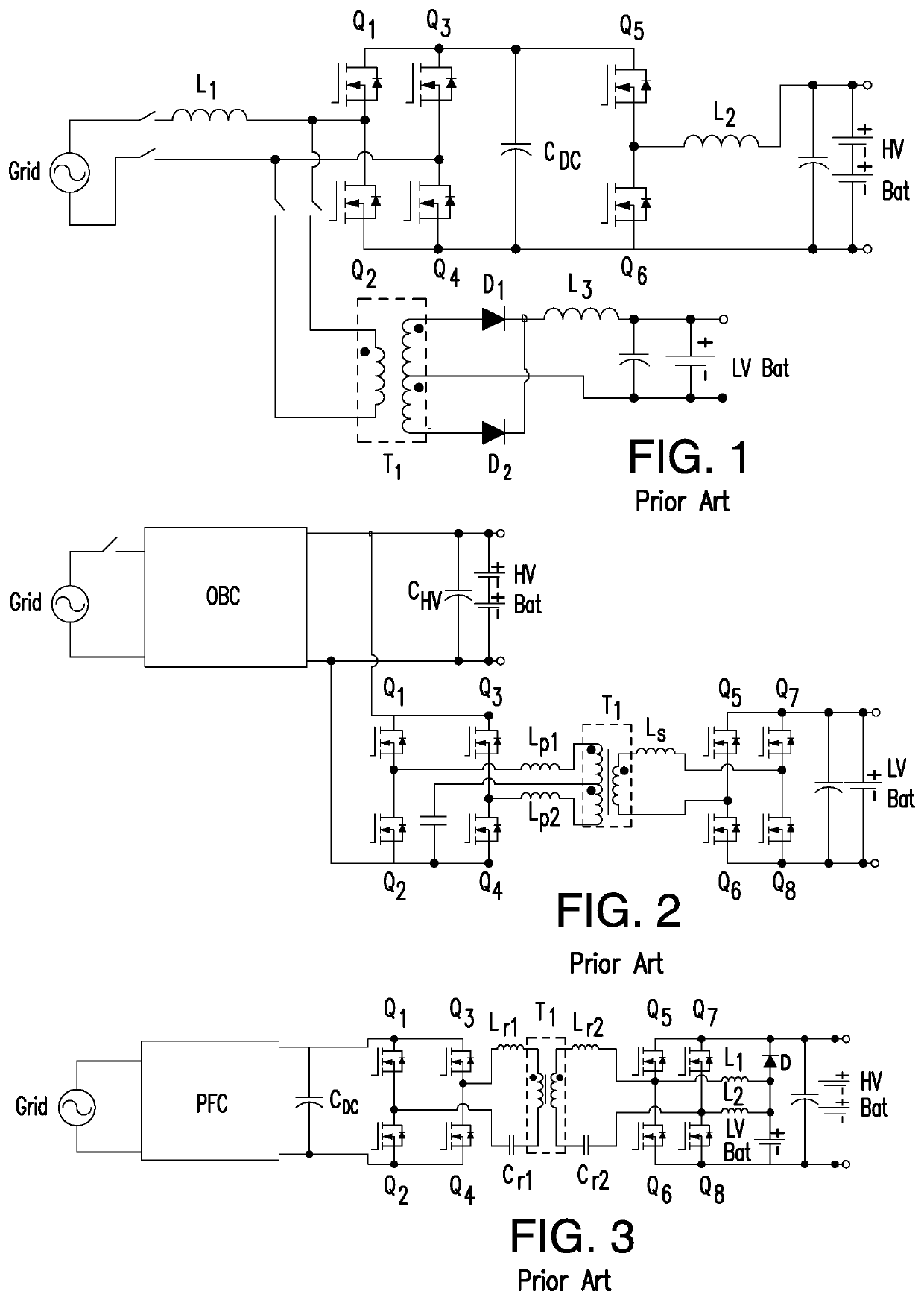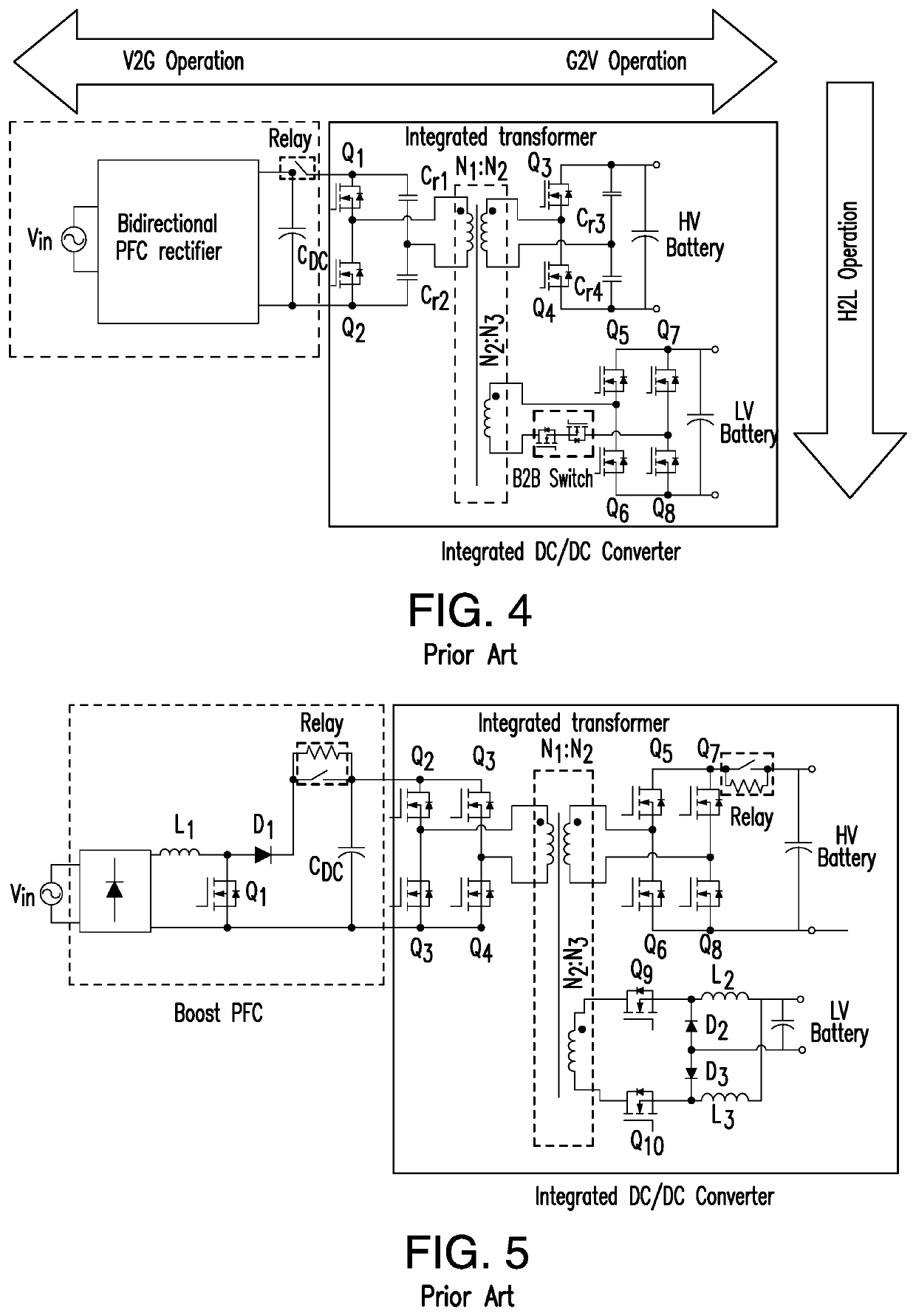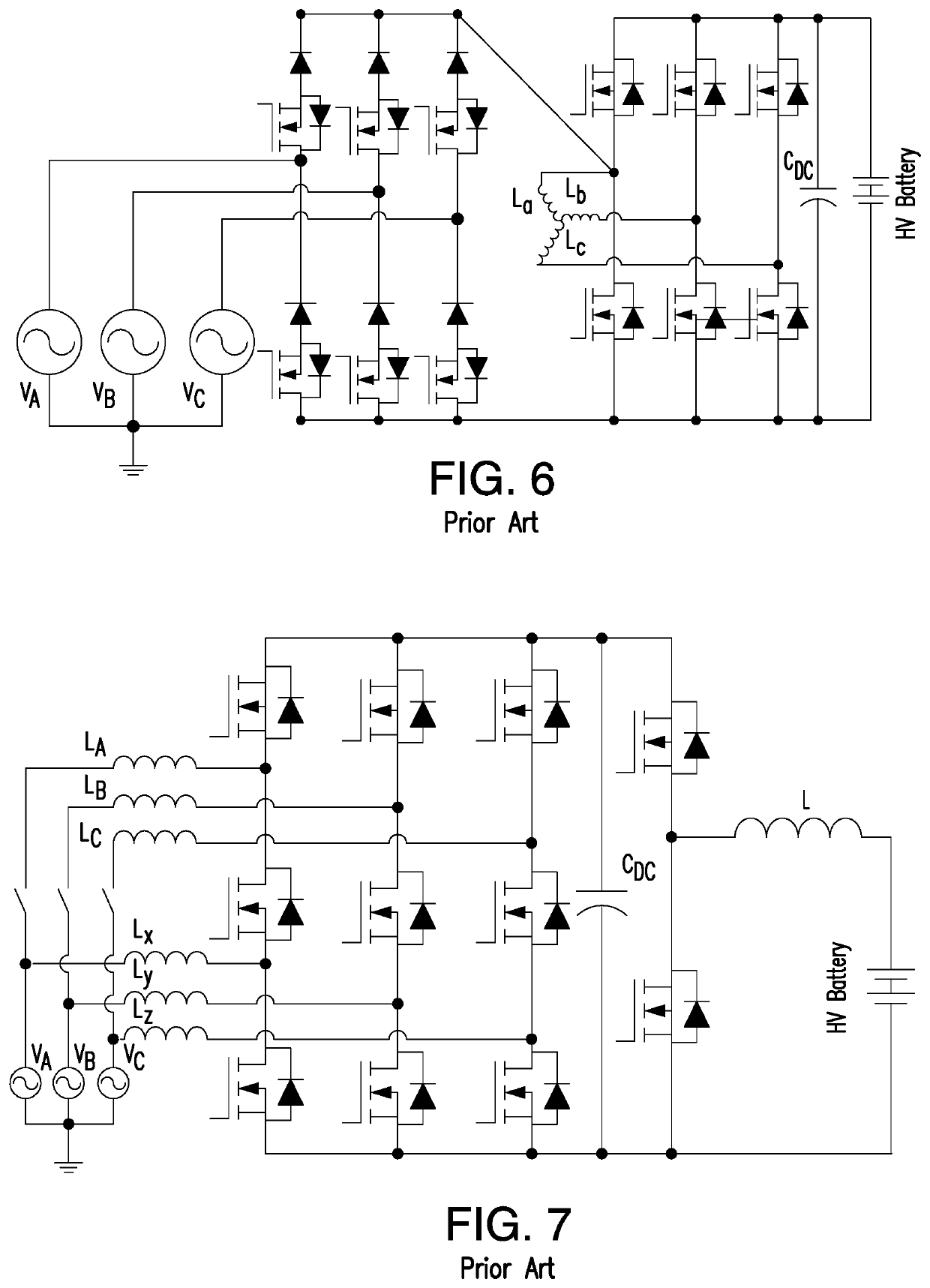Vehicle on-board charger for bi-directional charging of low/high voltage batteries
a technology for high-voltage batteries and chargers, which is applied in the direction of charging stations, battery/fuel cell control arrangements, transportation and packaging, etc., can solve the problems of affecting the structure, affecting the efficiency of the charging process, and affecting the charging effect of the battery, so as to achieve the effect of high efficiency
- Summary
- Abstract
- Description
- Claims
- Application Information
AI Technical Summary
Benefits of technology
Problems solved by technology
Method used
Image
Examples
Embodiment Construction
[0133]Referring to FIGS. 10-38 the subject on-board charger system 10, includes an on-board charger (OBC) 12, also referred to herein as an on-board charging DC / DC converter, and an integrated transformer sub-system 14. The OBC 12 also includes a bi-directional PFC (power factor correction) rectifier 16 through which the on-board charger system 10 is connected to the power grid 18.
[0134]The PFC rectifier 16 is included in an alternative current (AC) side 17 of the OBC system 10, while the integrated transformer 14 and the DC / DC converter 12, are included in a direct current (DC) side 19 of the OBC system 10. The AC side 17 and the DC side 19 are interconnected through a DC link 21 having a DC link capacitor CDC.
[0135]The transformer sub-system 14 includes, in the implementation shown in FIG. 10, a primary winding 23, a secondary winding 25, and a secondary winding 27 (also referred to herein as a tertiary winding) at the tertiary side 36 of the OBC (DC / DC converter) 12.
[0136]In the ...
PUM
 Login to View More
Login to View More Abstract
Description
Claims
Application Information
 Login to View More
Login to View More - R&D
- Intellectual Property
- Life Sciences
- Materials
- Tech Scout
- Unparalleled Data Quality
- Higher Quality Content
- 60% Fewer Hallucinations
Browse by: Latest US Patents, China's latest patents, Technical Efficacy Thesaurus, Application Domain, Technology Topic, Popular Technical Reports.
© 2025 PatSnap. All rights reserved.Legal|Privacy policy|Modern Slavery Act Transparency Statement|Sitemap|About US| Contact US: help@patsnap.com



